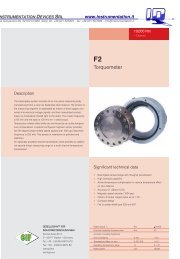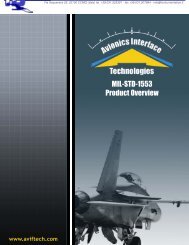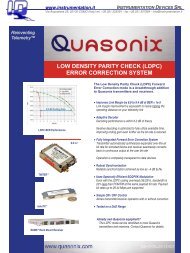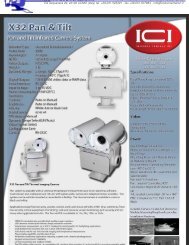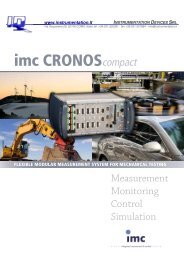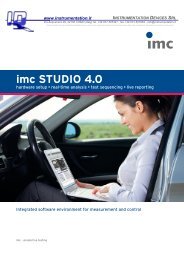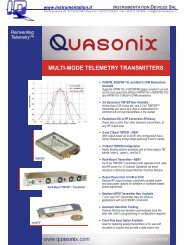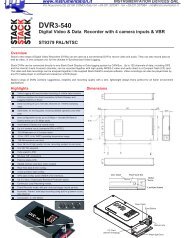DATA Acquisition - Instrumentation Devices
DATA Acquisition - Instrumentation Devices
DATA Acquisition - Instrumentation Devices
You also want an ePaper? Increase the reach of your titles
YUMPU automatically turns print PDFs into web optimized ePapers that Google loves.
<strong>DATA</strong> ACQUISITION<br />
Open<br />
ACRA CONTROL’s product design is based on the iNET-X framework which leverages<br />
open standards for systems management, time synchronization, Data <strong>Acquisition</strong> Unit<br />
(DAU) configuration and data transmission. It is a complete framework that has been<br />
developed around the core recommendations and technologies outlined in the CTEIP<br />
Integrated Network Enhanced Telemetry (iNET) standard ensuring interoperability for<br />
instrumentation networks. In essence iNET-X<br />
<br />
<br />
<br />
<br />
eXtends iNET to ensure high performance and network coherency<br />
eXcels at providing ease of set-up and management for networked DAS<br />
eXceptionally comprehensive statement on protocols and standards<br />
ensuring a future proof system<br />
eXtremely reliable and rugged hardware specification<br />
One key aspect of the iNET-X framework is the metadata layer which is defined as XidML. This is an open XML<br />
metadata standard for the aerospace community that has been developed and published by ACRA CONTROL in<br />
cooperation with industry partners. It provides a vendor-neutral hardware configuration platform that describes how<br />
data is acquired, processed and packaged for transmission, storage or reproduction and facilitates device<br />
interoperability.<br />
Rugged<br />
ACRA CONTROL’s products are designed to operate in the harshest environments for example rotor hubs, engine<br />
casings, fast jet wings and solid rocket boosters. The modules are rugged by design e.g. their small form factor is<br />
inherently vibration resistant. The chassis are fully environmentally qualified for the aerospace environment – please<br />
refer to the environmental specifications section for details. A limited set of modules and chassis are available to<br />
operate in extreme temperatures between -55 to 105ºC, for example on engine casings or launch vehicles.<br />
Common Product Features<br />
User Modules<br />
Standard Front Panel<br />
Power Supply<br />
Controller<br />
2 Mbytes of EEPROM<br />
Non-volatile Logic<br />
Standard Backplane<br />
5



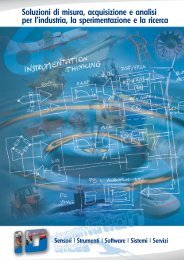
![98L!%$5 gYf]Yg - INSTRUMENTATION DEVICES](https://img.yumpu.com/50611686/1/184x260/98l5-gyfyg-instrumentation-devices.jpg?quality=85)
